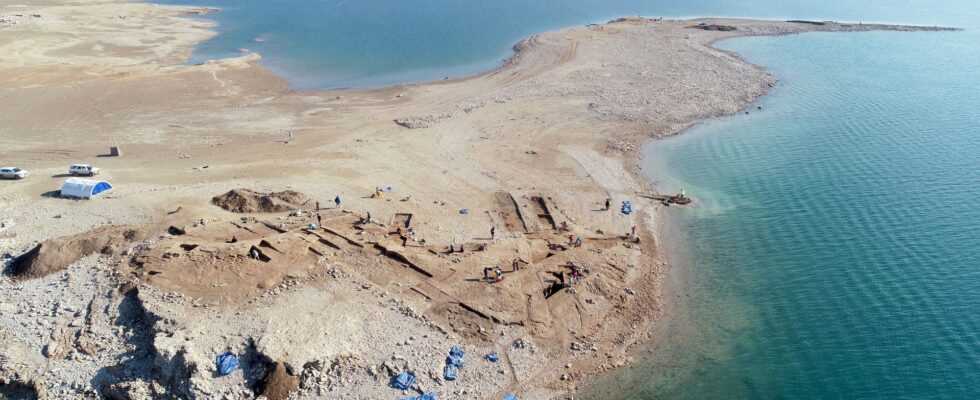Experts have excavated a 3,400-year-old city on the Tigris. The remains of the Bronze Age city had previously been submerged in Iraq’s Mosul reservoir for several decades, the water level of which had recently fallen sharply due to extreme drought. This is reported by a German-Kurdish excavation team in a press release from the University of Freiburg. The city may be ancient Zachiku, an important center of the Mittani empire, dating from 1550 to 1350 BC. had existed.
The south of Iraq was particularly affected by a persistent drought at the end of 2021. In order to be able to continue irrigating the fields, large amounts of water were drained from the reservoir, the researchers report. As a result, the water level in the lake dropped so low that the city complex at the edge of the water in Kemune reappeared. The excavation took place in early 2022 – before the archaeological site disappeared back into the lake.
Mud buildings in surprisingly good condition
The experts were able to largely reconstruct the city plan and uncover some previously unknown large buildings: including a massive fortification, a multi-storey warehouse building and a workshop complex. The researchers remarked that it was astonishing that the mudbrick buildings are still so well preserved – even though the remains had been under water for more than 40 years. A heavy earthquake around 1350 BC is likely to keep it in good condition. have taken care of: collapsing walls had buried and preserved the buildings.
The excavation team also discovered five pottery vessels containing an archive of over 100 cuneiform tablets that were probably made shortly after the earthquake. Some of these tablets were still in clay envelopes. They may be letters. “The fact that the cuneiform tablets made of unfired clay have survived for so many decades under water borders on a miracle,” says the archaeologist Peter Pfälzner from the University of Tübingen in the press release. The cuneiform tablets could provide new insights into the end of the sunken city and the beginning of Assyrian rule in the region.
